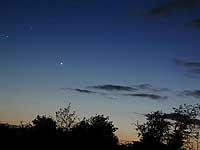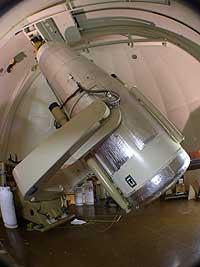The tenth planet. A world that has surpassed the Pluto border
In his view, astronomers were glad. 2003 He was called VB 12 (actually it's a way to classify more than a name). When the name was invented, measurements were started, but in order to have reliable data it was necessary to know exactly how the new world was moving. A measure of these characteristics requires a lot of patience.
Finally, astronomers published the first results: 2003 VB 12 is a pluto, i.e. an asteroid in or near Pluto's orbit, meaning astronomers concluded that the world does not have enough matter to be a planet.
It is not a strange result; it has long been discovered that in the vicinity of Pluto there is a "belt" of asteroids in which there are many asteroids in orbit around the Sun. This is called the Kuiper belt and it has sometimes been considered that Pluto is from there. But Pluto is not an asteroid, isn't it? It has always been the planet for us… Yes, and for us, turning Pluto's 'plain' upside down would be too big a change.
Aside from Pluto, the largest asteroid in the Kuiper belt is Quaoar. Sorry, it was Quaoar. Astronomers said so. The asteroid 2003 VB12 they had just found seemed larger than the Quaoar. Very interesting.
More observations were needed to obtain the data from the 2003 VB 12 asteroid. One of the first works for an astronomer is the calculation of the asteroid orbit. A lot of important information can be extracted from the orbit of a star, among other things the mass and size can be calculated.

And, in addition to the mass and size of the orbit, there is another non-obvious fact: you can know if it is in the solar system or not. After all, astronomers saw a point of light in a photo and were dazzled, as in the old photos of the same part of the space there is no such point. But what is that point? Does it have orbit around the Sun?
If it is a star within the Solar System it will be displaced at a minimum speed. That is why it does not appear in this case in previous photographs. But it can appear in photos from another side of the space, that is, if you can follow the movement if you made appropriate photos in previous years. And they did.
Astronomers searched the 2001 photos and found the 2003 asteroid VB12. Apparently, they didn't realize why they were looking for something in those pictures full of bright spots. However, they got to know the trajectory of the asteroid during the last two years.
However, this route did not correspond to an asteroid, at least an asteroid in the Kuiper belt. They made calculations again, launched new hypotheses and announced that it can be a very distant planet. They are not completely safe, but it can be.

New planet! And in the solar system! Such news, not only for an astronomer, but also for the street fan. This news changes the list of planets from nine to ten. One of the things that had to be done was to invent a noun. A planet cannot be called 2003 VB 12!
All other planets, and the moons around them, have serious names. Most have names of Roman or Greek gods: Mars, Jupiter, Mercury, Saturn, Uranus, Neptune, Titan, Ceres (asteroid), Europe, Io, etc. This time, astronomers have decided to use the name of an Inuit goddess: Sedna. Sedna is the sea goddess who lives there in the deep, dark waters of the sea. The new planet is in the deep dark zone of space, so it can be considered a goddess. A planet deserves that name, right?
But is it the planet? Or a citrin asteroid? They had to confirm. We had to know more. The new planet was re-studied.
The planet Sedna is smaller than Pluto, with a diameter of less than 1,700 kilometers. And it has a very elliptical orbit, like Pluto. In many things it is like Pluto. But that doesn't necessarily mean it's planet.

Yes, Pluto considers it a planet, but we do it for cultural heritage. Pluto is very special about the planets in the environment. It is not a giant planet made with gas or has orbits like them, because sometimes it is farther from the Sun than Neptune, but sometimes closer. What kind of planet is that? Possibly Pluto did not form the planet, but was the asteroid of Kuiper's belt and, for something, fled from there. We do not know.
Sedna is also a very rare case. What is the planet or asteroid? Several scientists propose that the famous Sedna is planetoid. But then is Pluto also planetoid?
Published in 7K.
Buletina
Bidali zure helbide elektronikoa eta jaso asteroko buletina zure sarrera-ontzian











